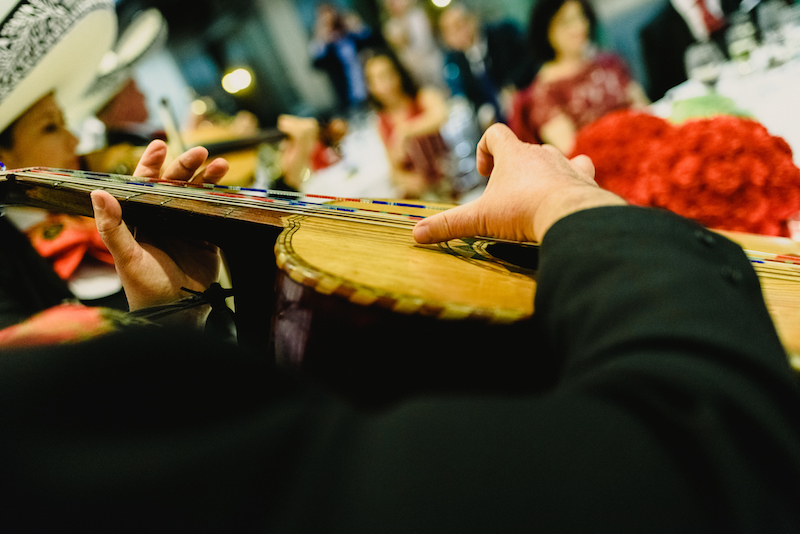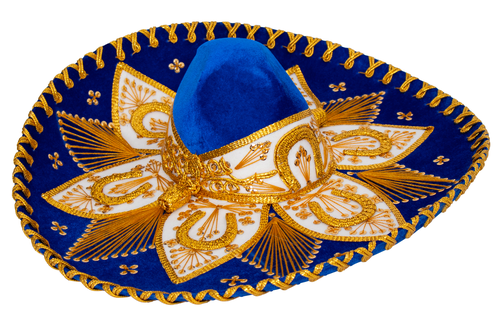Mariachi’s history: 5 interesting facts

We find it fascinating to get immersed in history to learn the events that were involved in giving rise to the traditions of all the countries. As we delved into the historical documents that refer to the birth of the mariachi, we came across peculiar anecdotes that we want to share with you.
It is well known that mariachi music is one of the most symbolic legacies of Mexico to the world, being recognized as an Intangible Heritage for Humanity by UNESCO in 2011. But there are little-known facts that you may find interesting to add to your cultural archive.
Religious Origins
As incredible as it may seem, the first sounds related to these popular musicians had their origins on the chants dedicated to Virgin Mary of the River. Different historians agree that when the missionaries arrived in Cocula, Jalisco, they found that the descendants of the Chimalhuacan indigenous people, called ‘Cocas’ that inhabited the region had a great musical tradition.
Cocas were talented interpreters of harmonious sounds with instruments created and carved by them. The friars made use of music to evangelize the community, which started to include the use of guitars and violins mixed the sounds of shells, flutes made of reed and other instruments of Mesoamerican origin such as the teponaztlis, which are one-piece drums, carved in wood.
This was the origin of a new genre, including the guitarrón and the vihuela afterwards, two of the characteristic tones of mariachi music.
Why the name ‘Mariachi’?
Many are the legends that accompany this peculiar name. Some say it’s derived from the French word mariage, (marriage) as this musical group was in charge of entertaining weddings during the French intervention. Others claim that it is a tree that grows in Jalisco and Michoacán.
The most accepted theory says that it is an extract from the song of the Cocas to the Virgin Mary of the River, which reads “Maria ce son” or “the song of Mary”, which sounds as /Ma-ree-ah/ /Shee/ when pronounced.
Music disdained by the aristocracy
Mariachi music was classified as rural at the beginning of the 20th century, considered non-appealing for Mexican jetsetters of the time and not worthy of the big city scene. It was not until their songs were included in the music repertoire to celebrate President Porfirio Díaz’s 75th birthday in 1905 that this music began to find a place among the treasured folklore of Mexico.
Two years later, during a feast offered to the US Secretary of State Eliu Root, the mariachi wore their typical suit for the first time. The mariachi suit consists of trousers and jacket with fine embroidery, bow tie, gold and silver button placket —also made of suede—, boots and a sombrero easily confused with the charro’s outfit: mariachi’s crown shape has only two dents or pedradas on the sides, while the charro’s has four as a mean of protection while managing the cattle.

Late trumpet
The original instruments’ formation used to leave trumpets aside, as the rough sound was found unpleasant. However, it is said that the director of the most important radio station in Mexico, Emilio Azcárraga Vidaurreta, had influence to have the trumpet incorporated in the 1930’s.
Nowadays, this particular instrument has the power to make you get goose bumps when listening to its thunderous tones accompanying the highest point of a mariachi song.

Export quality
Debates come and go about Mariachi’s place of origin, but some researchers and historians affirm that Jalisco, Michoacán, Colima and Nayarit shared the birth of this tradition. It’s sounds spread around the country, starting from Aguascalientes, Durango, Guanajuato, Guerrero, Oaxaca, Sinaloa, Sonora and Zacatecas, and towards the novo-Hispanic California.
Even when it took many years for this music to be embraced throughout the country, mariachi is an undoubted part of the Mexican identity. Cultural programs help promote this iconic music by organizing meetings, festivals, schools, conferences, research and exhibitions.
But not only in Mexico is this tradition treasured as own, in the United States, Aruba, Colombia and Venezuela there are schools that integrate the study of mariachi in their training programs, making it part of their day to day.
Do you want to sing to the sound of mariachi? Now that Mexican Independence Day (Sept. 16th.) is coming, we share some albums for you to start practicing.
“Ay, ay, ay, ay, ay! Canta y no llores, porque cantando se alegran cielito lindo, los corazones…”



